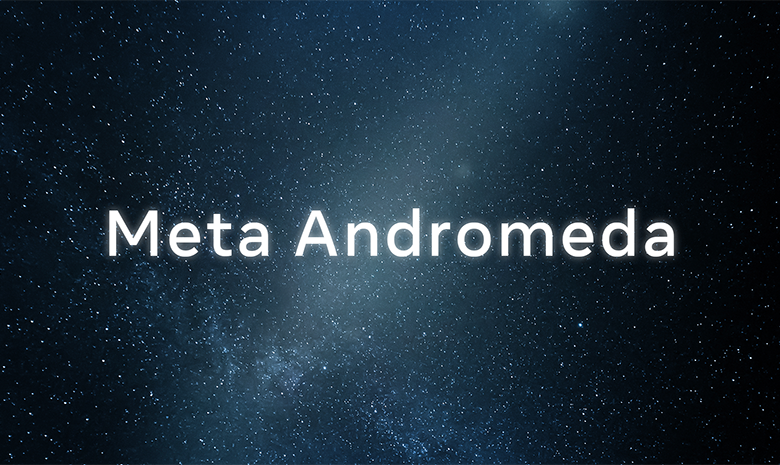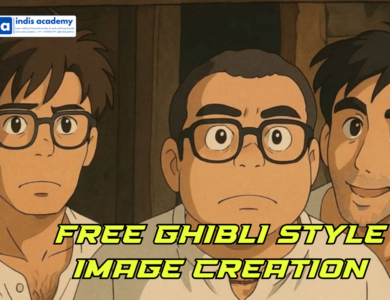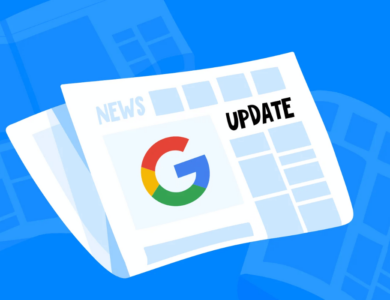Meta Andromeda Update: The 2025 Shift That Kills Micro-Targeting and Rewards Creative Diversity

If you’re a media buyer, you’ve felt it. The old “hacky” playbook of stacking 50 interests, running dozens of 1% lookalikes, and splitting budgets into tiny ad sets just doesn’t work like it used to.
You’re not imagining it. The engine underneath Meta’s ad platform has fundamentally changed. It’s called Andromeda, and it’s the AI-driven system powering Advantage+ and changing the game for good.
This isn’t just another small algorithm tweak. It’s a foundational shift in how ads are delivered. The key takeaway? Stop obsessing over who to target and start obsessing over what you show them.
Let’s break down what it is, why it matters, and exactly what you need to do about it.
TL;DR
- What it is: Andromeda is Meta’s next-gen, AI-powered “retrieval engine.” Its job is to sort through millions of possible ads in real-time and pick the few best ones to show a specific user. It’s the brain behind Advantage+.
- The Big Shift: The platform’s bias has moved away from audience tinkering (your job) and toward creative quality and breadth (also your job, but a different part of it).
- What Wins Now: Broad targeting, consolidated budgets, and a deep bench of diverse creative concepts.
- What Loses: Hyper-segmentation, manual interest-hacking, and running 10 slight variations of the same ad.
What Is Andromeda? (The Technical Core in Plain English)
In simple terms, Andromeda is Meta’s hyper-fast, hyper-smart ad matchmaker.
Every time a user opens Facebook or Instagram, an ad “impression opportunity” is created. In a fraction of a second, Meta has to decide which ad to show. This happens in a few steps:
- Candidate Generation: The system first grabs a wide net of millions of ads that could be relevant.
- Ranking (This is Andromeda): This is the magic. The Andromeda-level AI models then “retrieve” and rank the very best candidates narrowing those millions down to a few hundred, then a few dozen based on predicted value for both the user and the advertiser.
- Serving: The winner of that final micro-auction gets served to the user.
To do this at a massive scale (billions of users, millions of advertisers), Meta is using bleeding-edge hardware like the NVIDIA Grace Hopper. This matters because it allows the AI models to be enormously complex far smarter than any human-built audience.
This entire automated stack is what you interact with as Advantage+. Andromeda is the engine; Advantage+ is the car you drive.
What Changed vs. the “Old” Meta Ads?
This is the most important part to grasp. The rules of the game have changed.
From Audience Tricks → Creative Intelligence
- The 2018–2023 Playbook: We were all taught to be audience-hacking wizards. We stacked interests, created endless lookalikes (LALs), and built complex CBO funnels with 10 different ad sets for 10 different segments.
- The 2024–2025 Playbook: Forget that. The new playbook is about creative-led growth. You feed the machine a simple, broad audience (like “USA, 25-55”) and a wide variety of creative concepts. The AI does the segmentation for you. It’s smart enough to know that your UGC testimonial (social proof) should go to one user, while your “50% Off” offer (price) should go to another.
Crucially: The AI now recognizes concepts. If you just swap button colors or change one word in the headline, it sees it as the “same ad” and will down-rank the duplicates. You need true diversity.
Delivery & Budgeting Dynamics
Remember the “casting call” metaphor.
In the old system, splitting your $1,000/day budget across 10 ad sets gave each one only $100 to learn. You were crippling the algorithm, forcing it to make decisions with tiny, statistically-insignificant data sets.
Under Andromeda, you consolidate that $1,000 into one campaign and one ad set.
This gives the system a massive budget to “cast a wide net.” It will sample all your creatives (your “actors”) across the entire broad audience, see what’s getting a response, and then rapidly double down on the winners. This is why you’ll see more CPM and CVR (Conversion Rate) volatility week-to-week it’s the system exploring and exploiting in real-time.
How Andromeda Works (Without the Hype)
It’s not magic; it’s just incredibly powerful signal processing. The AI models are looking at:
- User Signals: Behavior, intent, predicted lifetime value (pLTV).
- Creative Signals: It’s not just looking at the image; it’s using semantics. It understands the text in your ad, the objects in your video, and the meaning of your offer.
This is precisely why micro-targeting fades. The model can infer who to show an ad to better than you can describe them with interest checkboxes.
It knows your user is a “new homeowner interested in sustainable gardening who just bought a car” without you needing to target “Home Depot” + “Gardening” + “Tesla.” It just figures it out from behavior. Your job is to give it the ad that speaks to that “sustainable gardening” motivation.
What This Means for Advertisers (Your New Playbook)
Stop fighting the system. Here’s how to work with it.
1. Account Structure
Your new baseline is the “1-1-Many” model:
- 1 Campaign: (e.g., Advantage+ or a broad CBO)
- 1 Ad Set: (Broad targeting, maybe some age/geo guardrails)
- Many Creatives: (This is where you do the work)
Your real targeting power now lies in exclusions. Instead of trying to include the perfect person, you just exclude the people you know you don’t want (like existing customers, recent leads, or 30-day website visitors).
2. Creative Strategy
This is the new skill cap. You must become a creative-generating machine.
- Concept-Level Diversity: Stop testing color swaps. You need different angles. Map your creatives to different customer motivators:
- Price/Offer (50% Off)
- Social Proof (UGC, Testimonials)
- Authority (Founder story, “As seen in…”)
- Objection Handling (FAQ, “Why we’re better than X”)
- Use Case / Demo (Product in action)
Cadence is Key: For scaling accounts, you should be feeding the system 10–20 net-new concepts every month. For smaller accounts, aim for 4–8. You need to rotate in new ideas weekly to beat creative fatigue.
3. Measurement & Testing
- Kill Micro Split-Tests: Stop running A/B tests on a single headline.
- Embrace “Slate Testing”: Load your ad set with 8-12 distinct concepts. Let the system run for 1-2 learning cycles (a few days to a week). Kill the bottom 30% of performers, then backfill their slots with new concepts. Rinse and repeat.
- Zoom Out: Stop obsessing over daily CPA whiplash. The system is exploring, which causes volatility. You must optimize for profitability metrics like MER (Media Efficiency Ratio) and pLTV (predicted Lifetime Value).
4. Targeting & Bidding
- Prospecting: Go broad or use Advantage+. Layer on your exclusions (e.g., purchasers 180d, leads 60d).
- When to still use interests/LALs? Almost never for prospecting at scale. The exceptions are very niche B2B, compliance/regulated industries (like housing or credit), or hyper-local businesses.
Concrete Setups You Can Copy
Setup 1: Prospecting (DTC Brand, $50k–$300k/mo spend)
- Campaign: Advantage+ Shopping (ASC) or Broad CBO (Conversions: Purchase).
- Ad Set: Open targeting. Geo/Age sanity checks (e.g., USA, 25-60).
- Exclusions: Exclude 180-day purchasers, 30-day website visitors.
- Creatives: 12-18 unique concepts live at all times. (UGC, demos, offers, founder story, bundles, objection-busters).
- Rules: Pause the bottom 25% (by spend/ROAS) weekly. Add 3-5 new concepts weekly.
Setup 2: Lead Gen (Services/EdTech)
- Campaign: Leads (CAPI-enabled for quality tracking).
- Ad Set: Broad targeting.
- Exclusions: Exclude 180-day leads.
- Creatives: 8-12 concepts hitting different pain points, outcomes, and proof points (testimonials, case studies). Ensure your post-click flow (landing page) is optimized.
Common Symptoms & Fixes (Post-Andromeda)
“My CTR tanked / CPM is through the roof!”
- Problem: You’re starving the model. You’re likely still using lookalike stacks or only running 3 clones of the same ad.
- Fix: Consolidate your budget into one ad set. Add 5-10 conceptually distinct new ads.
“My winning ads die after just 10-14 days!”
- Problem: This is normal. It’s creative fatigue, and the system is designed to keep exploring.
- Fix: You must have a creative pipeline. Rotate in fresh angles and winning concepts from your tests every single week.
“Broad spent all my money on junk traffic!”
- Problem: Your exclusions are too loose, or your post-click experience is bad.
- Fix: Tighten your exclusions (e.g., exclude all engagers, all visitors, all leads). Then, audit your landing page is it converting? The AI optimizes for the conversion, but if your page is bad, it can only do so much.
Risks, Myths, and What Andromeda Doesn’t Do
Let’s be clear:
- It’s not magic. A bad offer with bad creative will still fail, just faster and at a broader scale.
- Narrow targeting isn’t 100% dead. It still has a place in regulated niches or highly specific B2B. But for 90% of DTC/Lead Gen, broad is the way.
- Creative quantity is not the goal. Creative conceptual diversity is. 20 ads that are all the same “50% Off” message won’t work.
Your Andromeda Implementation Checklist
- Tracking: Is your Conversions API (CAPI) and event deduplication set up perfectly? This is non-negotiable. The AI runs on your data.
- Structure: Consolidate your prospecting campaigns into one Broad/Advantage+ campaign. Keep retargeting separate.
- Creatives: Build a creative concept calendar. Plan to inject new concepts weekly and kill the losers.
- Reporting: Shift your main KPI from daily CPA to weekly/monthly MER (Total Revenue / Total Ad Spend).
Conclusion:
Ultimately, the Andromeda update isn’t just another feature; it’s the new foundation for advertising on Meta. The platform has drawn a clear line in the sand: the era of granular, manual audience-hacking is definitively over. The AI, powering the Advantage+ stack, is now unequivocally better at finding your next customer than you are at describing them with interest tags.
This signals a fundamental evolution of the advertiser’s role. You are no longer a “media buyer” in the traditional sense of pulling audience levers. You are now a creative director and a system manager.
Success in 2025 and beyond hinges on two things: creative diversity and account consolidation. You must abandon fragmented ad sets and embrace the “1-1-Many” structure, giving the AI the budget and the data it needs to optimize. Your primary focus must shift from who you’re targeting to what you’re showing them.
This is a strategic pivot. The advertisers who adapt building a reliable pipeline of conceptually different ads to feed the machine will scale. Those still searching for the perfect lookalike stack will simply be left behind.

